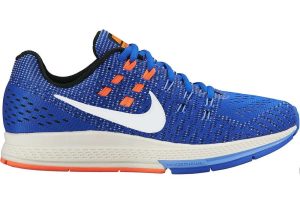The world seems to be spinning increasingly fast; because of this, the need to keep up with it also increases. What better way to do that than become a faster runner? Are you a complete newbie to running or some sort of accomplished athlete just looking to shave seconds? Among them, listed, are strategies for increasing your speed and performance. This checklist has gone through mental tricks and running tips on form. Now, training methods will also be covered. These can help you reach this kind of goal: becoming a faster and more efficient runner. So put on your shoes. Warm up your muscles. Let’s get ready to hit the pavement. We’ll move with the speed and precision of a cheetah.
Setting Your Speed Goals: A Key Component in Becoming a Faster Runner
Setting speed goals for running is one of the important things. These are supposed to increase your effort and make you a faster runner. You may want to trim minutes from your best race time or simply run better. A very clear, vivid picture of your speed goal will get you that much-needed kick to new limits.
Faster times at running entail much more than physical training alone can provide. They require mental strategies, too. Working on running endurance is great. However, being specific about speed takes you further than ever before. These mental tricks will have you running faster in no time: visualization and self-positive talk. They help in tacking mental barriers and getting through those really tough moments during your runs.
Hill workouts are important in training. They apply speed, too. Hill workouts challenge your muscles; they also boost your power and explosiveness. These features make one run fast on flat surfaces. Hill incorporation into your training will boost your strength and stamina. This will boost you by increasing your running speed.
Conclusively, setting speed goals is an important part towards becoming a faster runner. By combining physical training with mental strategies, you will realize the desired speed because it makes one efficient. Why? It is an addition of hill workouts to your routine. Remember, you have to be constant, patient, and dedicated to trainings. That’s how you’ll realize big improvements in running speed. So lace up your running shoes, set your speed goals, and let’s get running!
Importance of Proper Warm-up and Cool-down Techniques in Speed Improvement
Many athletes, upon reflection of attention in terms of running speed, focus their attention on their training routines. Yes, speed does require some form of training. On the other hand, it is equally important to note that proper warm-up and cool-down are techniques no athlete should ever forget. They loosen up the body for some rigorous running ahead and help in the recovery phase that supports increased speed and better performance among athletes.
Any serious speed training has to be preceded by a proper warm-up. A a good warm-up has to include dynamic stretches that will prepare the running muscles, such as quadriceps, hamstrings, and calves, which increase blood flow to those areas and loosen the muscles. It can help an athlete improve flexibility and minimize the risk of possible injuries. Add some activation exercises at the front—high knees and butt kicks—to fire up your muscles. This primes them for more effort and faster running.
Cooling down after a run is equally important to warming up. Cooling down allows the body to return back to its resting state. This minimizes the chance of post-workout soreness and tightness. This slow jogging or walking removes these wastes, such as lactic acid, from the muscles. A lower risk of ‘muscle fatigue’ and ‘delayed soreness’ is a result. Stretching, right after cooldown, will help maintain or even extend your running stride length. The stride length directly impacts how fast one can run. For example, stretching one’s hip flexors can increase the range of motion thereby improving stride length when running.
In conclusion, seeking to improve running speed should not overlook proper warm-up and cool-down techniques. Athletes can add some dynamic stretches and activation exercises to the warm-up phase to help set the muscles in preparation for the intense running and curb the risk of injuries. Lightweight exercises cool you down, then stretching. It helps the body recover and keeps or even increases in running stride length. Therefore, in general, these are the techniques that are more or less useful to add into their training. Speed gains and performance for athletes can be maximized.

Boosting Endurance: A Main Factor in Increasing Running Speed
You cannot claim the title of being a better runner until you develop your endurance. Increasing your running performance is therefore very dependent on your increasing your endurance. You can never afford to belittle endurance when training for running. It enables one to maintain a running pace and offers the chance of maintaining speed over a longer period. If you really want to increase your running speed, you ought to be serious about developing endurance.
One great way to improve your endurance is the direction of running, with some running drills added to your training. This will have the advantage of bettering your running speed, too. Those drills are cardio exercises for your heart and stamina, constructed to really work on your cardiovascular system so as to build it up. For example, doing intervals—running hard, then easier to recover—is a good one. This way, through gradually increased intensity and duration of the high-intensity intervals, you will increase your ability to sustain faster pace.
Sticking to some of the running techniques, coupled with running the same exercises, will have you running fast in no time. Keeping up form will greatly help in this area. Ensure that you always maintain an upright posture. Engage your core and pump your arms. This helps not only in running technique but also in giving good use of energies wasted, hence optimizing power for a faster run. With these techniques, it will lower the pace degradation during a continuous run. This generally gives a better running performance.
In brief, increasing endurance is the most basic step toward running fast. Add some running drills for speed. Add the techniques of good form runners. These will allow one to increase endurance and sustain an increased speed. Always bear in mind that endurance training is a patient and progressive overload. Thus, be patient and persistent toward attaining speed and efficiency in running.
How You Can Attain A Form Of Good Running: The Role Of Technique In Running Fast
One of the primary concerns in running usually has to do with setting a fast pace. Be sure to perfect that form. Whether it’s a veteran or newbie runner, it all points towards improving one’s speed—this is basically the bottom line to increasing one’s speed. Speed techniques can make an enormous difference between how fast and well one moves. They enable one to achieve new levels of performance.
One staple of form running is to pay attention to proper body mechanics. Your running posture should be tall. Keep your shoulders loose and engage your core; this helps keep your entire body in ideal alignment, lightens the load on your muscles, promotes good posture, and gives you the best possible stride length and frequency involved so you can be faster.
Aside from body mechanics, incorporating plyometric exercises into your training will also increase your velocity when running. These exercises include jump squats and box jumps that are effective in enhancing lower body power. They aid in the development of more force on each stride. Incorporating plyometric exercises can drastically improve anybody’s speed, especially in running. This is because plyometric exercises strengthen the legs and enhance muscle explosiveness.
Lastly, on the issue of running for speed, one has to note, above all, your foot strike. Hitting the ground with your mid- or forefoot—not with the heel—and it facilitates an incomparably much better transfer of energy. One is being pushed forward with each step. This little difference in form while running can reduce braking forces and make one faster.
In summary, you have to perfect your running form. It’s pivotal if you’re going to run fast. You must ensure improved running efficiency. Again, maximize on speed through techniques targeted on: Run with good body mechanics, add plyometric exercises, and change your foot strike. Lace up your favorite running shoes and get your form ready to hit the ground running!

Boosting Running Speed through Interval Training: Tested and Proven
One of the ways to increase running speed is through intervals. Such training is known to bring good results to all runners. This type of training encompasses alternate running and rest. If there are sprints involved, do them as intensely as your body can go. This can help increase your cardiovascular fitness and give you better running speed.
It works well for interval training as it challenges both the aerobic and anaerobic systems. Interventions of high intensity are depended on by the anaerobic metabolism in the body. With this type of training, you will be able to enhance your ability in making energy without oxygen. Likewise, the training teaches your muscles to work effectively and also helps rise in speed when running. Other than that, interval running functions well in coaching you in running form and at speed. The sprints let you focus on proper mechanics and stride length.
To conduct interval training for running, do some warm-up first. Do some light jogging for 10 to 15 minutes; then, select an interval—a length or time—that you will run as hard as possible at the highest intensity you can push yourself to. Let it recover well between each high-intensity interval so that you are able to really push the intensity through the next. Try to get in 3 to 4 intervals during your exercise. Increase their intensity and length as you build endurance.
One of the best ways to increase your speed in running is by incorporating interval trainings. It’s good for fitness, too. This enables you to challenge your body in a controlled way. This leads to great improvements in your running pace and form. Just remember to listen to your body. Start easy and increase as your fitness levels improve. Done properly and regularly, interval training will get you to your speed goals. Maybe more than any other workout, it is what you need to take your running to the next level.
Fueling Your Body Right: Nutrition Tips for Speedy Running Performance
It is also an excellent form of exercise that easily improves cardiovascular fitness and increases stamina. Any runner, beginners or experienced ones, should be well fueled to make sure to have the best performance. If you want to run fast, concentration falls much on nutrition since it will do a lot in enhancing performance.
Proper nutrition is important since it gives the energy and what it takes to run fast and efficiently. One needs eating a proper balance of high carbohydrate, protein, and healthy fat foods to run faster. Carbohydrates are items that supply the body’s main sources of energy. Taking carbohydrates before exercise can help improve running. Focus on complex carbohydrate sources like whole grains, fruits, and veggies for the purpose of providing controlled energy release.
Another important feature to consider is maintaining the correct form for running with speed. While you are running, your posture, arm swings, and stride will dictate the pace at which you will travel. In order to run fast, pay attention to your body, keeping it upright. Your arm swing should be easy. The strides one takes have to be shorter and quick. This can also be achieved through regular strength and flexibility training. They improve one’s running form so that one moves easily.
You need to be properly nourished to run good form, but what will improve your running pace is constant training and sharply incremental increases in your running volume. Adding things like interval training, hill sprints, and tempo runs in your workouts increase both your speed and endurance. But above all, the most important thing to do is really to listen to what your body is saying. Keep away from overtraining, since it will lead to injuries and setbacks.
Want to be a faster runner? Other critical factors to key into include nutrition, proper running form, and consistent training. The right kinds of food act as fuel to your body. Keeping good posture and multiple running workouts will keep you on the path to your goals. Remember to listen to your body. Be patient, and enjoy the journey as you work to become a faster and better runner.
Build strength and power: Work out Right for Faster Running
If you’re looking to run faster, just logging miles day after day won’t do the trick. You have to incorporate a few workouts into your running schedule in order to develop strength and power. One of the best ways to achieve that kind of speed is to include some plyometrics into your regimen.
Plyometric exercises for runners include the performance of explosive movements that stimulate and strengthen the muscles one uses when running. They include jumps, hops, and bounds, which increase the ability in terms of power and efficiency. Plyometrics is central to improving neuromuscular co-ordination necessary in stepping up pace while running. Add some plyometric workouts to your training and they shall provide the explosiveness needed to propel oneself harder and faster.
The other important component of becoming a faster runner is simply incorporating some running interval training. In interval training, one alternates short runs at high speed with passive or slow jogging. Those bouts of high speed will get your cardiovascular fitness level up and help you to run fast. But it’s by challenging your body like this that you’ll gradually be able to sustain faster paces for longer periods of time.
Do this by balancing plyometric exercises against running intervals. Put these exercises into your normal running routine for hopefully developing overall strength and power. More importantly, it builds the endurance needed to have your muscles make you a faster runner. This, in turn shall improve your performance in running.
Rest and Recovery: The Most Commonly Ignored Ingredients of Speed Development
Probably the most elusive thing in the running world, for any type of athlete, is how to progress. People look to train more and harder, to change technique, or buy new gear to hold that secret of speed. But rests and recovery get lost along the way.
Although most people think about running fast by way of stressing one’s body limits, reciprocal rest and recovery make up an integral part of running at good pace. When you conduct difficult workouts, your muscles tear. They must be allowed time to recover and rebuild. Without proper rest, these partial tears mount over again to finally result in overuse injuries, which are causative factors of impediments to progress.
Besides preventing injuries, proper rest and recovery also allow your body to make physiological adaptations to running. When you are resting, you are in a phase of supercompensation with your body. Your muscles redevelop, stronger, and less sensitive to tiredness. This adaptation phase is the key to a faster pace in running and permits higher intensities and longer distances.
So how do you actually put rest and recovery into your training program? First, learn how to listen to your body and allow yourself regular rest days. This doesn’t mean you have to be inactive. Light activities, such as stretching, yoga, or just casual walking, still support recovery. Next, make sure to get good sleep. Eat well. And employ tools to help you recover, including such items as foam rollers or compression gear.
In sum, if one desires to bring out their running pace, it is never a good idea to underestimate the power of rest and recovery. Doing too much without rest to set your body right is actually bad for health. Add in some rest within your training program. This rest will give your muscles all the time they need to repair, adapt, and improve. So, remember, the pathway toward a faster pace is initiated with great care for your body.

Mental Strategies for Success at Speed: How to Overcome Mental Barriers in Running
Running is hard. The activity requires not only physical power but also mental strength and strategies one can use to overcome the mental barriers that stand in the way of speed. The running with speed definitely requires advanced physical training. At the same time, training the mind is what brings overall success. Here are some simple mind tricks to help one achieve speed goals by surpassing mental barriers in running.
One step in becoming a faster runner is by setting clear and attainable goals. If you ever ran at maximum capacity, the “extra” seconds might seem kind of nice to drop off. Or it might be finishing a certain distance in a set time. Having clear validity about where you want to go offers a sense of purpose and motivation. Write down a main goal and then break it down into little milestone markers so that you can see yourself getting closer and closer and celebrate all of the little victories.
Another mental strategy for speed accomplishment is positive self-talk. Monitor your thoughts. Replace negative statements with positive affirmations and encouragement. Remind yourself of your prowess. Be focused on abilities rather than perceived weaknesses. Having a positive mindset will enhance your confidence and mental toughness. This will allow you to ‘thrash through’ any obstacle and perform well.
Visualization is yet another effective mental tool that is applied for enhancing running speed. On your way out to start your run, take a minute or two to positively review yourself—incare and easy. Imagine these feelings of stylish, powerful, fast, fluid f lows. Yes, success imagined prepares you psychologi-cally and physiologically for the task at hand. It helps your brain and muscles create the pathways necessary for movement that is quick and easy. So do this frequently. The more you practice, the more likely your mind and body are to create the speed you desire.
Becoming a better runner does not look at the endurance or fitness levels of one’s body alone; it also deals with how well one’s mind is trained in order to help in surmounting mental barriers and push oneself beyond limits. Setting clear goals, using positive self-talk, and seeing oneself accomplish are three ways to engage the power of one’s mind toward success in speed and overall running goals. So, lace up those shoes and train your mind to get ready to be that faster runner.
It’s About Being Consistent: Day-to-Day Habits of a Runner for Sustained Speed Progress.
Chasing a better runner inside oneself cannot go without the unmatched power of consistency. This is because daily habits are involved, which novices and experienced runners alike have to include in their lives for permanent progress. Your consistency in training builds a strong base and supports overall improvement. So, want to run faster? Here are some tips you can add into your daily routine:.
First, focus on regular and varied workouts. Easy runs increase endurance, while intervals, tempos, and long runs raise overall running speed and endurance. Ease into increased intensities and lengths of workout to push your body hard enough that, in due time, it will adjust. Note that progress might not be fast, so just trust the process. Stay dedicated to your training plan.
Second would be strength training and cross-training that most have neglected. This will help avoid injuries through weightlifting, yoga, or even swimming. These can easily fit together with a run. They also boost one’s muscle strength and whole performance. A strong body is a key to speed because it enables one to keep in a posture and create power in every stride.
Finally, rest and recover. You have to push yourself if you want to improve at anything, but remember you also need to rest and recover from that pushing. Get adequate sleep, good food, and fit some regular stretching or foam rolling into your daily routine. This will keep you from getting too burnt out on the training, help keep you from getting injured, and give your body time to adapt to the stress you are placing on it to make it go faster over time.
Keep in mind that one has to get up early to run faster. This will call for a lot of dedication, effort, and patience. Doing these daily habits keeps you on course to building sustainable progress toward your running goals. Lace up those shoes and hit that pavement, and be consistent; the outcome shall justify the input.
Final Words
As the year ends, there’s something in us, just by virtue of its ending, that seems to make us reflect on the past and ponder what the future holds. It is in those final words that there seems to be a weight attributed or attached to them—some profound, intrinsic significance. It could be the last lines of a book or the final words to be spoken before the farewell from somebody one loves; there is power in those closing moments. Equally, as runners, the last words in a race seal our success and satisfaction. The question would be, therefore: How to Become a Faster Runner and Finish Well?.
First and foremost, consistency is key. If you want to be a faster runner, you’ve got to train religiously for it. It doesn’t mean you really have to kill yourself every day but find a balance between hard workouts and rest. The more regularly you will train, the more gradual gains you will experience in your speed and fitness.
Second, make sure you work on both speed and strength. Although traditional long-distance runs develop your endurance, adding some speed workouts and strength training can turn you into the fastest runner out there. Intervals, hill sprints, and weightlifting can help one be fast. They increase your muscle power so that you are able to hold a bigger pace in runs.
Finally, remember to just listen to your body and recover accordingly. Forcing your body to work well beyond its capacity could lead to unnecessary injuries and burnout from overworking. Listen to what your body says—take rest days, stretch, use a foam roller—to have proper recovery. This is how the body will adapt and become stronger for continued increases in speed and tolerance.
In summary, to become a faster runner, it calls for dedication. It only calls for consistent and diversified training. It then calls for recoveries that are thoughtful. These techniques will gradually make one faster, thus ending every race satisfied. Remember that last words are not meant for literature or tender goodbyes but also for being a better runner. So, lace up those shoes, set those goals, and stride to make an impression that lasts.








